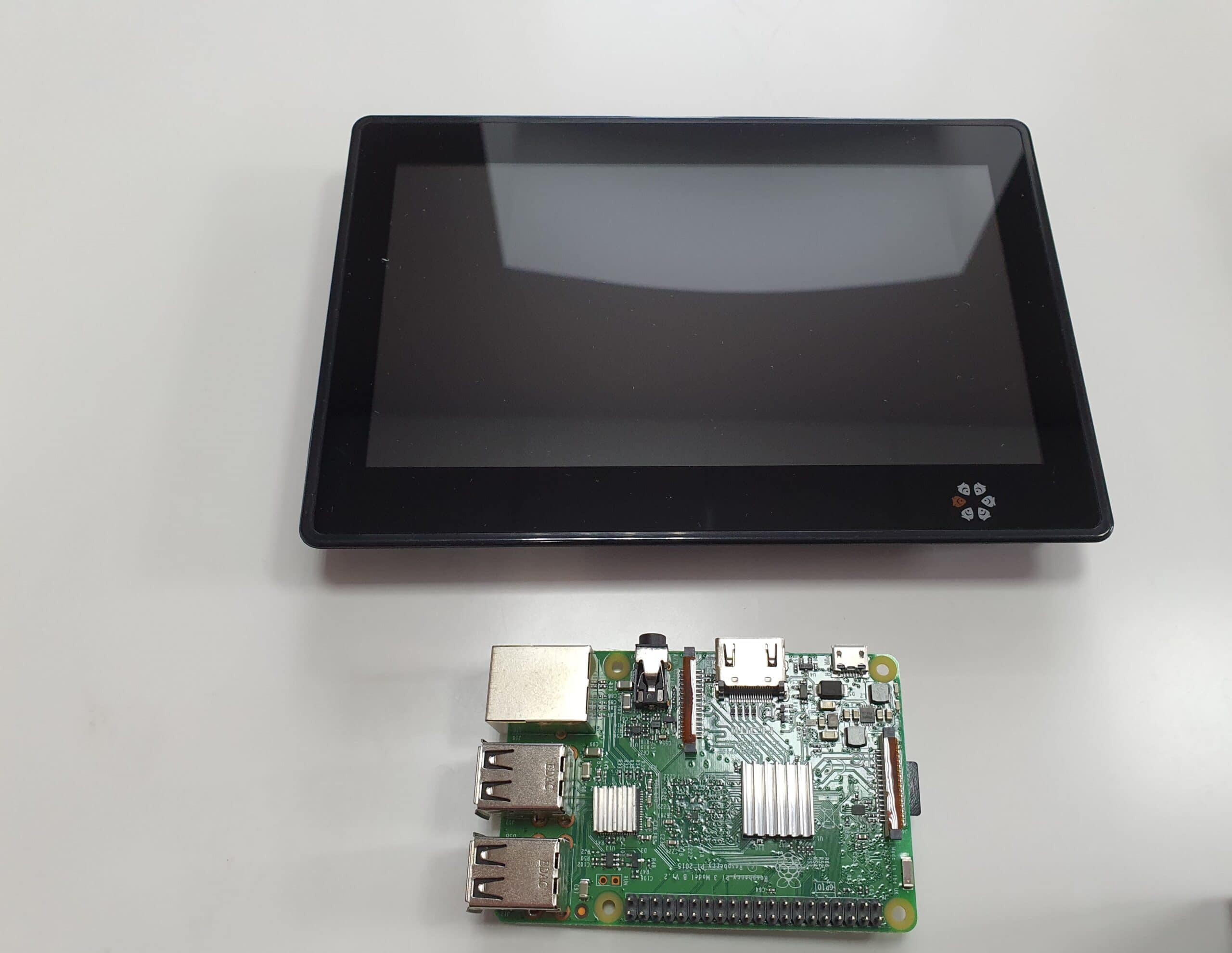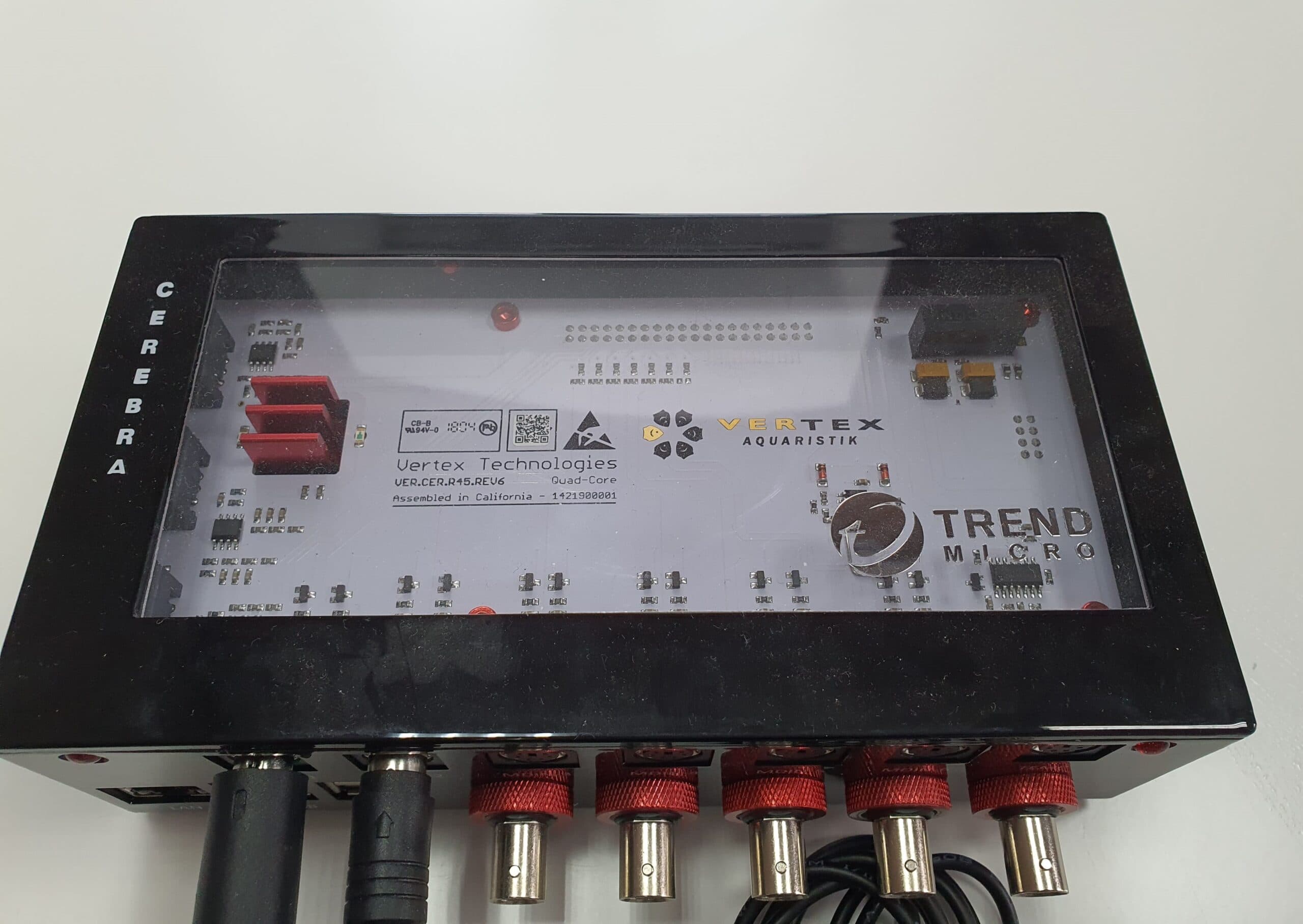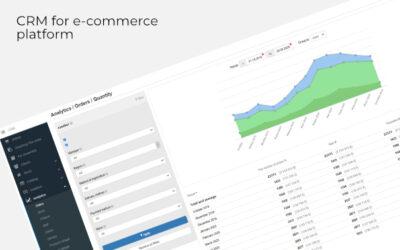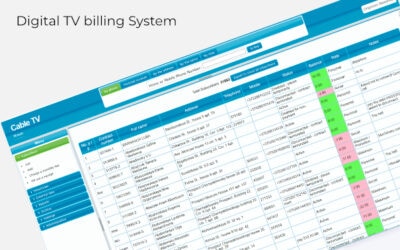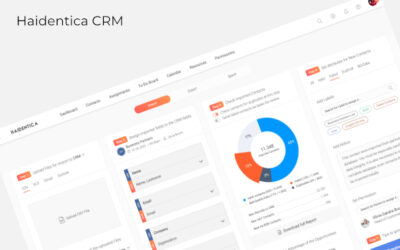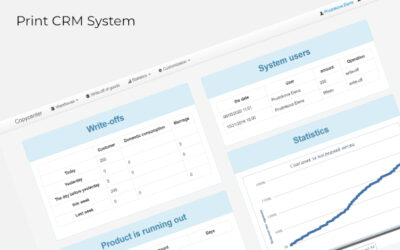Client’s need:
to develop software connecting the dots of the Vertex Cerebra 7 Aquarium Controller ecosystem, and enabling to control it via the 7” touch screen.
Engagement:
When we first met the Vertex Aquaristik people, they have already had all the hardware for the Cerebra 7 controller. It was built on the previous version of the Raspberry Pi board, but the set of sensors was the same as now. The head unit was lack of software, which was the main reason for our interaction.
The aim itself looked not so easy but entirely clear. We were meant to furnish up the ecosystem with the central software to gather, process, and display all the data. What is more, the UI was to have as convenient and straightforward as possible: the potential users were mostly unfamiliar with technologies. And finally, the system was planned to be used in aquaculture without significant changes.
There was one passionate aquarium hobbyist among our team, so we established a contact rather quickly. After a discussion and research, we defined the overall requirements:
- Gathering together and processing of the data from the different-type sensors.
- UI for the head unit that will be easy and understandable even for non-techies.
- New types of sensors connectivity possibility without the need for redesign.
- Compatibility with the Industrial-grade sensors for use in aquaculture.
Development process:
Different data processing
Gathered by more than a dozen sensors, information is coming to the controller. Real-time processing of such significant volumes of heterogeneous data turned out to be rather a massive task for the selected version of Raspberry Pi. As a result, Vertex engineers decided to change it to a more powerful Raspberry Pi Model B. Especially that the usage in aquaculture required even more computation power. In addition, they will be upgrading the hardware in the future once the new models will arrive.
Clean UI
The next challenge was to present all the data on the touch screen as simple and understandable as it is possible. 7 inches is not much when we should place here about 20 different indicators, as well.
To meet the required level of simplicity, we used the high-contrast black and white color scheme. Each of big and evident icon illustrates the type of data certain indicator shows. Finally, the UI we developed turned out to be very simple and clear.
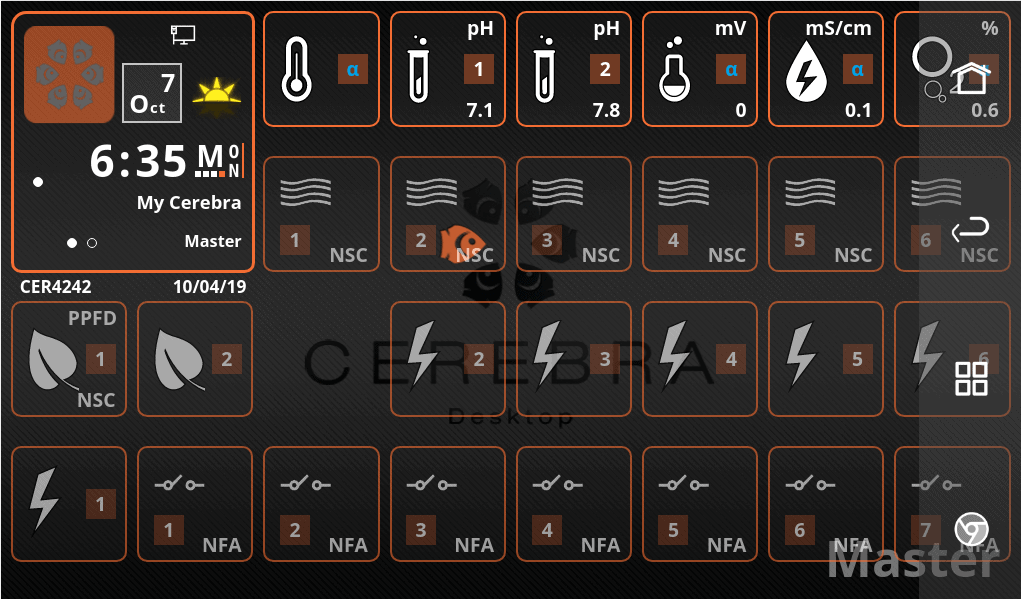
Ready for changes
The 3rd party device connection possibility is included in the Cerebra 7 architecture. We were to have the same relating to the software. Collecting and processing any new type of data is not a big deal for both the controller and the head unit. But how to display more indicators without layouts and worsening of usability?
We solved this issue by adding multiple home screens. Once any new indicator arrives, it is adding on the free space on the closest home screen, much as on the smartphones and tablets. As a result, the size of the elements remains unchanged, no matter how much of them were added. Moreover, end-user can easily change the order of indicators by drag-and-drop.

Industrial usage
Rugged aluminum chassis is only one feature that helps using Cerebra 7 in the industrial aquaculture. There are plenty of free ports and several types of wireless connections available here. We took all the hardware capabilities while developing the software. It can interact with the cloud, as well as to expand its basic features to meet the industrial requirements. Data can be transferred via different channels exactly therein where it should be, e. g. to the cloud or local company server.
Results:
The project was finished successfully, and Cerebra 7 got positive feedback during that time. The client also complimented the result of our job.
The current version of the controller uses a quad-core 64-bit ARMv8 processor. It is selling in different countries around the globe. And we continue our collaboration with Vertex Aquaristik on-demand basis.


